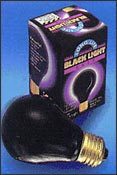Solar + Battery Car DIY STEM Kit
$11.99$5.95
 In order to create an ultraviolet source from an incandescent light, it is
necessary to remove or filter out the bulk of the power being produced in the
infrared and visible wavelengths. Some paints that appear black in visible light
may, in fact, be significantly transparent to ultraviolet light. These paints
appear black to us because they absorb most of the power in the light that our eyes
can see.
In order to create an ultraviolet source from an incandescent light, it is
necessary to remove or filter out the bulk of the power being produced in the
infrared and visible wavelengths. Some paints that appear black in visible light
may, in fact, be significantly transparent to ultraviolet light. These paints
appear black to us because they absorb most of the power in the light that our eyes
can see.
 'There is no inductive method which could lead to the fundamental concepts of physics. Failure to understand this fact constituted the basic philosophical error of so many investigators of the nineteenth century.'
'There is no inductive method which could lead to the fundamental concepts of physics. Failure to understand this fact constituted the basic philosophical error of so many investigators of the nineteenth century.'